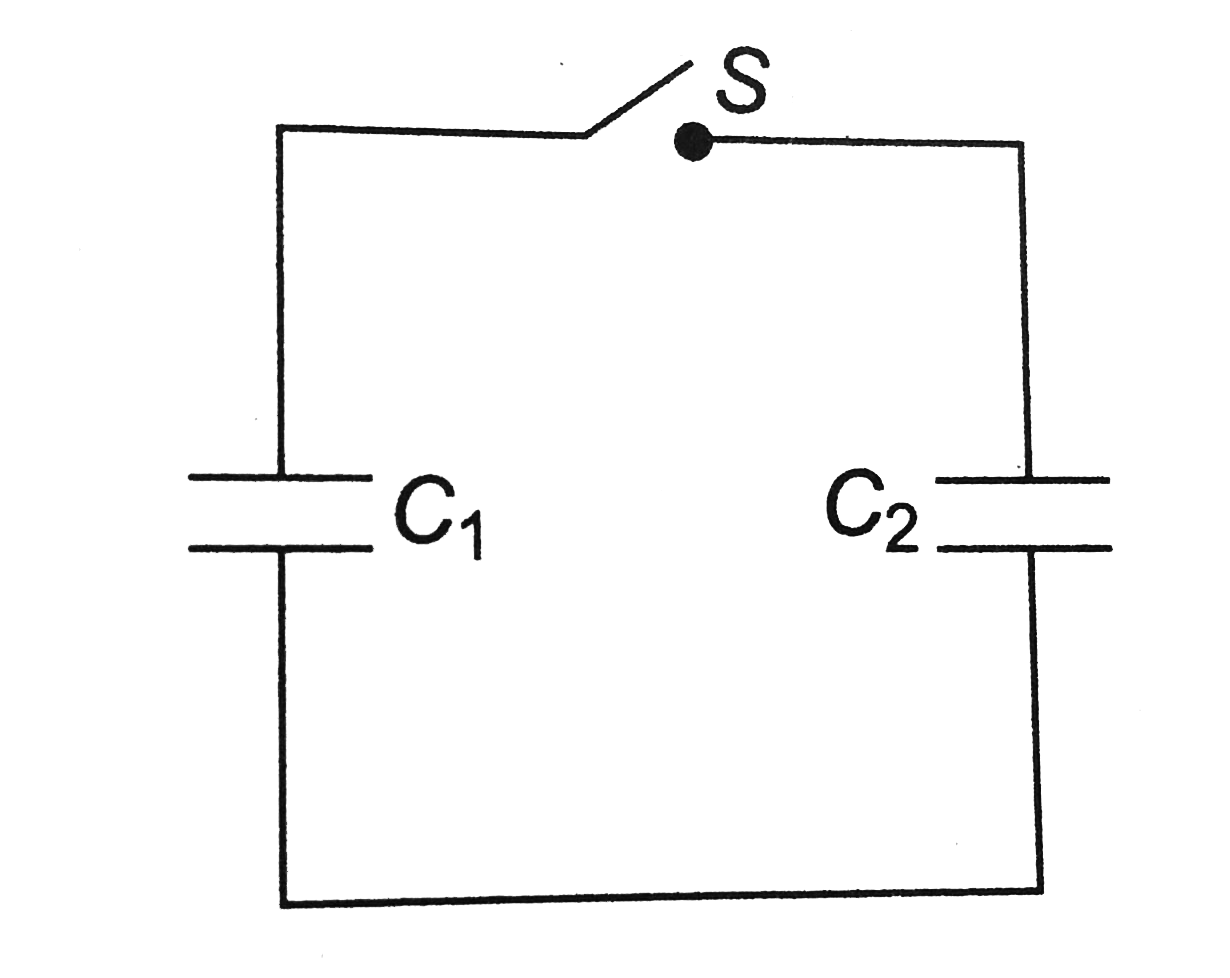A capacitor C1 is charged to a p.d.V. The charging battery is then removed and the capacitor is connected to an uncharged capacitor C2. The final p.d. across the combination is
VC1C1+C2
VC2C1+C2
VC1C2C1+C2
VC1+C2
The correct Answer is:A
The charge on condenser C1=Q1=C1V
If it is connected across uncharged condenser of capacity C2, then p.d. across C2 is given by ,
potential=Q1C2=VC1C1+C2
Topper's Solved these Questions
Similar Questions
A μF capacitor C1 is charged to V0=120V. The charging battery is then removed and the capacitor is connected in parallel to an uncharged +4μF capacitor C2.

(a) what is the potential difference V across the combination?
(b) what is the stored energy before and after the switch S is closed?
View SolutionA 2μF capacitor C1 is first charged to a potential difference of 10 V using a battery. Then the battery is removed and the capacitor is connected to an uncharged capacitor C2 of 8μF. The charge in C2 on equilibrium condition is _______μC. (Round off to the Nearest Integer)

View Solution
Knowledge Check
An uncharged capacitor is connected to a battery. On charging the capacitor
AAll the energy supplied is stored in the capacitorBHalf the energy supplied is stored in the capacitorCThe energy stored depends upon the capacity of the capacitor onlyDThe energy stored depends upon the time for which the capacitor is chargedA capacitor of capacitance C is charged to a potential difference V0. The charged battery is disconnected and the capacitor is connected to a capacitor of unknown capacitance Cx. The potential difference across the combination is V. The value of Cx should be
AC(V0−V)VBC(V−V0)VCCVV0DCV0VA capacitor of capacity C1=1μF is charged to a potential of 100 V. The charging battery is then removed and it is connected to another capacitor of capacity C2=2μF. One plate of C2 is earthed as shown in figure. The charges on C1andC2 in steady state will be
 A50μC,50μCB100μC,zeroC1003μC,2003μCDzero,zer
A50μC,50μCB100μC,zeroC1003μC,2003μCDzero,zer
A capacitor of 60 pF charged to 20 volt. Now battery is removed and then this capacitor is connected to another identical uncharged capacitor. Find heat loss in nJ
View SolutionA 100μF capacitor is charged to 100V. After the charging, battery is disconnected. The capacitor is then connected in parallel to another capacitor. The final voltage is 20V. Calculate cap the capacity of second capacitor.
View SolutionA 8μF capacitor is fully charged across a 12V battery, it is then disconnected from the battery and connected to an uncharged capacitor. If the voltage across the capacitor becomes 3V, then the capacitance of the uncharged capacitor will be
View SolutionA 5μF capacitor is fully charged across a 12 V battery, It is then disconnected from the battery and connected to an uncharged capacitor, If the voltage across the capacitor becomes 3 V then the capacitance of the
View SolutionConsider the circuit shown where C1=6μF,C2=3μF and V=20V. Capacitor C1 is first charged by closing the switch S1. Switch S1 is then opened, and the charged capacitor is connected to the uncharged capacitor C2 by closing S2.

View Solution
